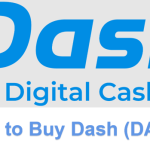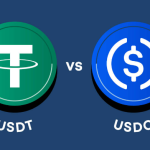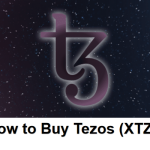Master the Cryptocurrency basics with BtcAdv’s Crypto Guides, where we take an in-depth look at some of the top crypto projects so you can learn about crypto innovations, and consider the many ways you can invest in crypto now.
Jump to:
What Is Cryptocurrency
Any form of money that exists digitally or virtually and employs cryptography to secure transactions is referred to as cryptocurrency, also known as crypto-currency or crypto. A decentralized system is used by cryptocurrencies to keep track of transactions and create new units rather than a central body that controls or issues them.
With the use of cryptocurrency, transactions can be verified digitally without the involvement of banks. Anyone, anywhere can send and receive payments using this peer-to-peer system. Payments made with cryptocurrencies do not exist as actual physical coins that can be carried and exchanged; rather, they only exist as digital entries to an online database that detail specific transactions. A public ledger keeps track of all cryptocurrency transactions that involve money transfers. Within digital wallets, cryptocurrency is kept.
Due to the fact that transactions are verified using encryption, cryptocurrency has earned its name. This means that the storage, transmission, and recording of cryptocurrency data to public ledgers all involve sophisticated coding. Security and safety are the main objectives of encryption.
The first cryptocurrency was Bitcoin, which was created in 2009 and is still the most well-known today. The main reason people are interested in cryptocurrencies is to trade them for profit, with speculators occasionally driving prices sky-high.
KEY TAKEAWAYS
- A cryptocurrency is a type of digital asset that relies on a network distributed across numerous computers. They are able to exist independently of governments and other central authorities thanks to their decentralized structure.
- Many industries, including finance and law, are predicted to be disrupted by blockchain technology and related technologies, according to some experts.
- The benefits of cryptocurrencies include less expensive and quicker money transfers as well as decentralized systems that do not crash at a single point of failure.
- Having a volatile price, requiring a lot of energy to mine, and being used for illegal purposes are some drawbacks of cryptocurrencies.
How Does Cryptocurrency Work?
Blockchain technology, which keeps a tamper-resistant record of transactions and keeps track of who owns what, underpins Bitcoin and the majority of other cryptocurrencies. By preventing people from duplicating their holdings and trying to spend it twice, blockchains were able to solve a problem that plagued earlier attempts to create entirely digital currencies.
Depending on how they are used, individual cryptocurrency units may be referred to as coins or tokens. Some can be used to participate in specific software programs like games and financial products, while others are stores of value or intended to be used as exchangeable units for goods and services.
When you own cryptocurrencies, you don’t actually own anything. What you possess is a key that enables you to transfer a record or a unit of measurement from one individual to another without the help of a reliable third party.
Although Bitcoin has been around since 2009, cryptocurrencies and blockchain applications are still developing financially, and more uses are anticipated in the future. The technology could eventually be used to trade bonds, stocks, and other financial assets.
How are Cryptocurrencies Created?
The process of “mining,” which is employed by Bitcoin, is one typical method of producing cryptocurrencies. In order to validate the legitimacy of transactions on the network, a process known as “bitcoin mining” requires computers to solve difficult puzzles. The owners of those computers may receive newly created cryptocurrency as payment. Other cryptocurrencies create and distribute tokens in different ways, and many of them have a noticeably smaller environmental impact.
What Is A Blockchain?

An open, distributed ledger that stores digitally signed transaction records is known as a blockchain. In actuality, it functions somewhat like a checkbook that is dispersed among numerous computers all over the world. Transactions are recorded in “blocks” that are then linked together on a “chain” of previous cryptocurrency transactions.
“Imagine a book where you write down everything you spend money on each day,” says CEO and co-founder of the African cryptocurrency exchange Quidax is Buchi Okoro. “The entire book, a collection of pages, is a blockchain, with each page resembling a block.”
With a blockchain, each cryptocurrency user has their own copy of this book, resulting in a single transaction record. Every new transaction is recorded as it occurs, and all copies of the blockchain are simultaneously updated with the new data to maintain the consistency and accuracy of all records.
Each transaction is examined using a validation technique, such as proof of stake or proof of work, to prevent fraud.
Proof Of Work Vs. Proof Of Stake
The two most popular methods for confirming transactions before they are added to a blockchain are proof of work and proof of stake. Following that, the verifiers receive cryptocurrency as payment for their work.
Proof Of Work
“Proof of work is a method of verifying transactions on a blockchain in which an algorithm provides a mathematical problem that computers race to solve,” says The social media manager at Xcoins.com is Simon Oxenham.
Each participating computer, often referred to as a “miner,” solves a mathematical puzzle that helps verify a group of transactions—referred to as a block—then adds them to the blockchain ledger. A small sum of cryptocurrency is awarded to the first computer that completes the task successfully. In the case of Bitcoin, a miner receives 6.25 BTC (or roughly $200,000) for validating a fresh block.
Blockchain puzzle-solving competitions can demand a lot of electricity and computer resources. Given the costs of power and computing resources, the miners may only just break even with the cryptocurrency they receive in exchange for validating transactions.
Proof Of Stake
To reduce the amount of processing power required to verify transactions, some cryptocurrencies employ the proof of stake technique. With proof of stake, the number of transactions each person can verify is limited by the amount of cryptocurrency they’re willing to “stake,” or temporarily lock up in a communal safe for the chance to participate in the process.
“It’s almost like bank collateral,” says Each person who stakes cryptocurrency is eligible to verify transactions, but the likelihood that you will be chosen rises generally with the amount you front.
“Because proof of stake removes energy-intensive equation solving, it’s much more efficient than proof of work, allowing for faster verification/confirmation times for transactions,” says Osom Finance’s CEO, Anton Altement
For instance, Bitcoin typically takes at least 10 minutes to complete a transaction. Now contrast that with Solana, a cryptocurrency platform that employs the proof-of-stake mechanism, which averages about 3,000 transactions per second (TPS), making it significantly faster than the sluggish Bitcoin blockchain.
The biggest competitor to Bitcoin, Ethereum, is also about to fully transition to a proof-of-stake mechanism. Ethereum estimates its energy usage will decrease by 99.95% once it closes “the final chapter of proof of work on Ethereum.”
The Role Of Consensus In Crypto
Consensus mechanisms are needed for both proof of stake and proof of work to validate transactions. This means that while both use individual users to verify transactions, each verified transaction still needs to be reviewed and approved by the majority of ledger holders.
Types Of Cryptocurrency
Among cryptocurrencies, Bitcoin is the most well-liked and valuable. It was created by Satoshi Nakamoto, who went uncredited, and distributed a white paper introducing it to the world in 2008. At the moment, the market is filled with thousands of cryptocurrencies.
Each cryptocurrency asserts to have a unique purpose and specification. Ethereum’s ether, for instance, positions itself as gas for the underlying smart contract platform. Banks use the XRP cryptocurrency from Ripple to make international transfers easier.
The most actively traded and covered cryptocurrency is still bitcoin, which was made accessible to the general public in 2009. Over 19 million bitcoins were in use as of May 2022, worth a total of about $576 billion. Never will there be more than 21 million bitcoins.
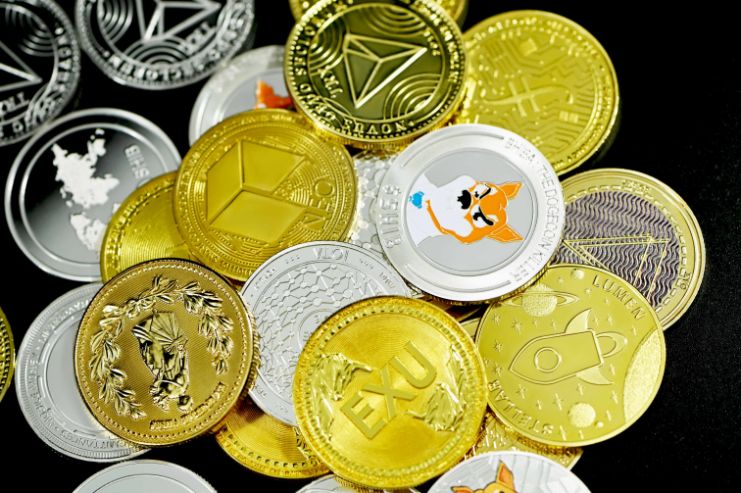
In the wake of Bitcoin’s success, many other cryptocurrencies, known as “altcoins,” have been launched. While some of these are new currencies that were created from scratch, others are copies or forks of Bitcoin. They consist of EOS, Solana, Litecoin, Ethereum, and Cardano. By November 2021, Bitcoin accounted for about 41% of the total value of all cryptocurrencies, which by that point had risen to over $2.1 trillion.
It is inaccurate to compare and contrast cryptocurrencies with various functions because each of these types of cryptocurrencies has value for a unique set of factors.
Fiat Cryptocurrency
The term “fiat money” refers to a form of currency that has been accepted by the general public but has no inherent value. If so, what is a fiat cryptocurrency?
The original purpose of cryptocurrencies was as a store of value and/or a medium of exchange. Some of the earliest projects in the sector are examples of these digital currencies, which were the original use case for cryptocurrencies. Fiat cryptocurrencies only aim to improve on fiat currencies by making them more accessible, less expensive, and decentralized.
- Bitcoin – The original fiat cryptocurrency
- Bitcoin Cash – Similar to Bitcoin with some technical differences
- Litecoin – Often referred to as the silver to Bitcoin’s gold
- Monero – A cryptocurrency that provides additional anonymity and security for users
Stablecoins
Stablecoins are tied to the price of another asset (or group of assets) in order to reduce volatility while maintaining the advantages of a cryptocurrency, in contrast to fiat cryptocurrencies, which issue their own form of money. The justification for stablecoins is that while fiat cryptocurrencies are superior to fiat money in terms of portability, security, and anonymity, they are useless due to sharp price swings.
Tether, whose value is correlated with the US dollar, is the most well-known stablecoin. Users can conduct business or store their assets in a cryptocurrency called Tether that is pegged to a reliable asset, the US dollar.
Utility Tokens
A blockchain network uses some cryptocurrencies to power commerce and other operations. The fact that these utility tokens have a predetermined use and a market for them makes them money even though they aren’t necessarily money in and of themselves.
Some of the most popular utility tokens include:
- Ether — Pays for computational power on the Ethereum blockchain
- XRP — Facilitates the transfer of any digital asset on the Ripple blockchain
- EOS — Similar to Ether, EOS is used to perform tasks on a decentralised network
It can be beneficial to start with a cryptocurrency that is widely traded and has a solid market presence if you’re thinking about investing in cryptocurrencies (though there is no guarantee of success in such a volatile market).
BtvAdv Guides to Various Cryptocurrencies
BtcAdv has created guides to some widely circulated cryptocurrencies, including Bitcoin and some altcoins, or Bitcoin alternatives:
- Bitcoin: the first cryptocurrency and most valuable one.
- Ethereum: frequently used to conduct financial transactions that are more complicated than those enabled by Bitcoin.
- Litecoin: an adaptation of Bitcoin aimed to simplify payments.Cardano: a competitor to Ethereum led by one of its co-founders
- Solana: another Ethereum rival that places a strong emphasis on efficiency and speed.
- Dogecoin: originally created as a joke but has become one of the most valuable cryptocurrencies.
- Shiba Inu: another dog-themed token with more complicated mechanics.
Polkadot (DOT)
- Polkadot vs Solana – Differences & Similarities You Need to Know
- Cardano vs. Polkadot – Which One Should I Choose In 2023
- What is Polkadot (DOT) Faucet | Best Faucets to Earn Free DOT 2023
- How to Earn Free Polkadot (DOT) – 11 Safe Ways to Get Free Polkadot (DOT) in 2023
- How to Make Money With Polkadot (DOT)
USD Coin (USDC)
- USDC.e vs. USDC – How to Swap USDC.e vs USDC on Avalanche
- USD Coin (USDC) Staking Overview – 5 Things You Should
- USDC vs. USDT – Which Stablecoin Is Better In 2023?
- What is USD Coin (USDC) Faucet | Best Faucets to Earn Free USDC 2023
- How to Earn Free USD Coin (USDC) – 11 Safe Ways to Get Free USD Coin (USDC) in 2023
Cardano (ADA)
- Cardano vs. Solana – 2023 Cryptocurrency Comparison
- Cardano vs. Polkadot – Which One Should I Choose In 2023
- Cardano NFT Marketplace- Everything You Need To Know!
- What is Cardano (ADA) Faucet | Best Faucets to Earn Free ADA 2023
- How to Earn Free Cardano (ADA) – 11 Safe Ways to Get Free Cardano (ADA) in 2023
Are Cryptocurrencies Legal?
Governments or monetary authorities are the sources of fiat currency authority. The Federal Reserve, for instance, backstopped each dollar bill.
However, neither a public nor a private entity backs cryptocurrencies. Making a case for their legal status in various financial jurisdictions around the world has thus proven challenging. It doesn’t help that cryptocurrencies have mostly operated outside of the majority of the current financial infrastructure. The use of cryptocurrencies in daily transactions and trading is impacted by their legal status. The Financial Action Task Force (FATF) recommended in June 2019 that wire transfers of cryptocurrencies be governed by its Travel Rule, which mandates AML compliance.
El Salvador was the only nation in the world to accept Bitcoin as legal tender for financial transactions as of December 2021. Globally, different jurisdictions have different laws governing cryptocurrencies.
Japan’s Payment Services Act defines Bitcoin as legal property.6 It is required of cryptocurrency exchanges operating in the nation to gather customer data and wire transfer information. Within its borders, mining and cryptocurrency exchanges are prohibited in China. A framework for cryptocurrencies was reportedly being developed in India in December.
The European Union has legalized cryptocurrencies. Derivatives and other products that use cryptocurrencies will need to qualify as “financial instruments.” The European Commission published the Markets in Crypto-Assets (MiCA) regulation in June 2021, setting regulations and safeguards for businesses or vendors offering financial services using cryptocurrencies.
On the Chicago Mercantile Exchange, the largest and most complex financial market in the world, crypto derivatives like Bitcoin futures are offered. The Securities and Exchange Commission (SEC) previously held the position that Bitcoin and Ethereum were not securities; however, in September 2022, SEC Chair Gary Gensler declared he thought cryptocurrencies were securities. This position implies that the legal status of cryptocurrencies may be subject to regulation.
Are Cryptocurrencies Safe Investments?
Due to significant investor losses caused by scams, hacks, and bugs, cryptocurrencies have gained a reputation as unstable investments. The technical complexity of using and storing crypto assets can be a significant risk for new users, even though the underlying cryptography is generally secure.
In addition to the market risks associated with speculative assets, cryptocurrency investors should be aware of the following risks:
- User risk: In contrast to traditional finance, a cryptocurrency transaction that has already been sent cannot be stopped or reversed. According to some estimations, a fifth of all bitcoins are currently inaccessible because of forgotten passwords or invalid sending addresses.
- Regulatory risks: Many governments are attempting to regulate some cryptocurrencies as securities, currencies, or both, so their regulatory status is still up in the air. It might be difficult to sell cryptocurrencies or lead to a decline in price across the board if there is an abrupt regulatory crackdown.
- Counterparty risks: To store their cryptocurrency, a lot of investors and business owners use exchanges or other custodians. One could lose their entire investment if one of these third parties was to commit theft or suffer a loss.
- Management risks: Few safeguards against dishonest or unethical management practices exist as a result of the absence of comprehensive regulations. Because management teams couldn’t deliver a product, many investors lost a lot of money.
- Programming risks: The movement of user deposits is managed by automated smart contracts on many investment and lending platforms. By using one of these platforms, an investor accepts the chance that a flaw in the software or an exploit could result in a loss of capital.
- Market Manipulation: In the world of cryptocurrencies, market manipulation is still a major issue, and some exchanges have been accused of manipulating prices or conducting trades that were unfair to their customers.
The market capitalization of all cryptocurrencies has increased to over $1 trillion despite these risks, leading to a sharp rise in price. Despite the asset’s speculative nature, some have been able to make significant fortunes by taking the risk of investing in cryptocurrencies in their infancy.

Cryptocurrency Pros & Cons
The goal of introducing cryptocurrencies was to completely overhaul the financial system. Tradeoffs are necessary, as with any revolution, though. There are many differences between the theoretical ideal of a decentralized system with cryptocurrencies and its actual implementation at the current stage of cryptocurrency development.
Investors from a variety of backgrounds have strong opinions about cryptocurrency. Here are a few reasons why some people think it’s a transformative technology and others worry that it’s just a fad.
Pros
- 1. A brand-new, decentralized paradigm for money is represented by cryptocurrencies. To enforce trust and regulate transactions between two parties in this system, centralized intermediaries like banks and monetary institutions are not required. Therefore, a system with cryptocurrencies eliminates the possibility of a single point of failure, such as a big bank, causing a chain reaction of crises around the globe, like the one that was caused in 2008 by the failure of institutions in the United States.
- 2. With the use of a trusted third party like a bank or credit card company eliminated, the direct transfer of money between two parties is made easier by cryptocurrencies. Public and private keys, as well as various reward structures like proof of work or proof of stake, are used to secure these decentralized transfers.
- 3. Cryptocurrency transfers between two transacting parties are quicker than traditional money transfers because they do not use third-party intermediaries. Decentralized transfers of this type include flash loans in the world of decentralized finance. These loans, which are used in trading and processed without supporting collateral, can be carried out instantly.
- 4. Investing in cryptocurrencies can result in profits. Over the past ten years, the value of cryptocurrency markets has risen dramatically, at one point approaching $2 trillion. As of May 2022, Bitcoin was valued at more than $550 billion in crypto markets.16
- 5. One of the most well-known use cases for cryptocurrencies is the remittance industry. At the moment, cryptocurrencies like Bitcoin act as intermediary currencies to speed up international money transfers. A fiat currency is thus converted to Bitcoin (or another cryptocurrency), transferred across international borders, and then converted to the final destination fiat currency. The process of sending money is simplified and made more affordable using this technique.
- 6. Through a process known as staking, some cryptocurrencies give their owners the opportunity to generate passive income. Utilizing your digital assets to contribute to the blockchain protocol’s transaction verification is known as crypto staking. Even though staking carries some risks, it can help you increase the amount of cryptocurrency you own without having to buy more.
Cons
- 1. Cryptocurrencies are actually pseudonymous, despite their claims to be an anonymous form of exchange. They leave a digital footprint that organizations like the Federal Bureau of Investigation (FBI) are able to analyze. This makes it possible for governments or federal agencies to monitor the financial transactions of regular people.
- 2. Criminals now frequently use cryptocurrencies for evil deeds like money laundering and shady transactions. It is already widely known about Dread Pirate Roberts, who operated a drug marketplace on the dark web. Cryptocurrencies have also grown to be a favorite among hackers, who use them in ransomware operations.
- 3. The wealth of cryptocurrencies is supposed to be distributed among numerous parties on a blockchain, making them theoretically decentralized. Ownership is actually very concentrated. For instance, an MIT study found that only 11,000 investors held about 45% of the rapidly increasing value of Bitcoin.
- 4. The idea behind cryptocurrencies is that anyone with access to the Internet and a computer can mine for them. However, popular cryptocurrency mining uses a lot of energy, sometimes as much as entire nations do. Mining has been centralized among large companies with revenues in the billions of dollars due to the high energy costs and unpredictable nature of the industry. 10% of miners account for 90% of its mining capacity, according to an MIT study.
- 5. Although cryptocurrency blockchains are very secure, other crypto storage spaces, like exchanges and wallets, are vulnerable to hacking. Many cryptocurrency exchanges and wallets have been hacked over the years, sometimes resulting in millions of dollars worth of “coins” stolen.
- 6. Price volatility affects cryptocurrencies that are traded on open markets. Bitcoin has experienced rapid surges and crashes in its value, climbing to as high as $17,738 in December 2017 before dropping to $7,575 in the following months.3 Thus, some economists think that cryptocurrencies are a bubble or fad that will pass quickly.
- 7. Numerous cryptocurrency projects are unproven, and widespread adoption of blockchain technology is still a long way off. Long-term investors may never receive the returns they anticipated if the fundamental concept behind cryptocurrencies is not realized.
- 8. There are other dangers for short-term cryptocurrency investors. A lot of people have made quick money by investing in it at the right time because of its tendency to fluctuate in price, but a lot of other people have lost money by doing so right before a crypto crash.
- 9. These erratic price swings might also go against the fundamental principles underlying the projects that cryptocurrencies were designed to support. People might be less likely to use Bitcoin as a payment method, for instance, if they are uncertain of its value the following day.
- 10. Governmental changes and crackdowns could have unpredictable effects on the market because governments around the world have not yet fully figured out how to handle cryptocurrencies.
What Are Cryptocurrency Exchanges?

You need a crypto exchange because it’s typically impossible to trade cryptocurrency on a traditional exchange, with the exception of emerging crypto-based securities.
Centralized, decentralized, and hybrid exchanges are the three main categories of cryptocurrencies. In spite of the fact that centralized exchanges are still more popular for trading cryptocurrency, it’s crucial to comprehend the differences between the three so you can select the one that works best for you.
Centralized
A centralized cryptocurrency exchange is a place where coins are bought and sold with a third party’s assistance. It is possible to use a conventional, also known as fiat currency, like the dollar to execute trades, as well as trading crypto itself.
Decentralized
In that they enable direct trading between crypto investors without the use of a middleman, decentralized exchanges (DEX) are more in line with the spirit of cryptocurrencies. Since there is no centralized platform that can be compromised, a DEX may theoretically be more secure. You might also notice lower fees and quicker transaction speeds on a DEX since there are no middlemen required.
Hybrid
Less often than centralized or decentralized exchanges, hybrid exchanges are a combination of both. They try to combine elements from both, for instance., the liquidity of a centralized exchange and the security and anonymity of a DEX.
There are other factors to take into account when selecting the exchange where you prefer to trade cryptocurrencies, such as the ease of use and whether your funds may be insured.
Ways To Invest In Cryptocurrency
There are many ways to invest in cryptocurrencies, just like there are in other types of investments. However, given the unique characteristics of the crypto market—which is entirely digital, decentralized, and dependent on blockchain technology—investing in this area can resemble trading in stocks, bonds, and ETFs very differently. That being said, as you’ll see when you examine the choices below, even cryptocurrency is edging its way into more established markets.
1. Trading Crypto
Trading digital assets, much like you would trade traditional securities like stocks, bonds, or ETFs, is arguably the simplest way to invest in cryptocurrencies. An account can be created on a cryptocurrency exchange (see above), funded by linking your bank or sending money via wire transfer (different exchanges have different rules), and then you can start buying and selling the cryptocurrency of your choice.
The best course of action, just like with conventional investing, is to have a plan. Plan to trade every day? Are you looking to buy and hold an investment for a while? Would you prefer to diversify your holdings by investing in larger, more established cryptocurrencies? You can start trading cryptocurrency with SoFi Invest® with as little as $5, and you have access to the market around-the-clock.
2. Crypto Mining
Another method of obtaining crypto assets is through mining, but this usually involves a much larger time and equipment investment. A consensus mechanism used by many crypto platforms is crypto mining, also known as proof-of-work. It’s an intensive and highly competitive endeavor, whereby miners (basically the computers or “nodes” on the network) execute billions of complex calculations in order to verify a block of data on a given blockchain. A miner is typically compensated with coins when they are the first to confirm a block.

3. Crypto Staking
Proof-of-stake (PoS) is a model that differs from the proof-of-work paradigm. This is a consensus mechanism as well, but it uses a method that is thought to be more passive and, therefore, more energy-efficient than PoW. Staking cryptocurrency entails making a purchase and waiting to be chosen as a validator on the network. Blocks on the blockchain are verified by validators, who are paid with additional coins and function similarly to miners in a PoW system. PoS is currently being used in fewer projects, and there is some disagreement over which is more effective or secure, PoW or PoS.
4. Bitcoin ETFs
After a protracted regulatory battle, the SEC started approving exchange-traded funds (ETFs) based on bitcoin futures in October 2021, ushering in a flurry of fresh investment opportunities. These ETFs, which started trading in November 2021, only invest in bitcoin futures, not in physical bitcoin assets. The possibility of investing in blockchain-based technologies can also be considered by investors in certain funds.
5. Crypto-based Stocks
The businesses that offer hardware and other backend services expand alongside the popularity of cryptocurrencies. Investors may want to think about funding large-scale cryptocurrency mining operations, cryptocurrency exchanges, or businesses that incorporate cryptocurrencies into their operations or payment systems. Crypto stocks, like the nascent crypto-based ETFs, are likely to offer investors more opportunities as this market grows.
How To Buy Cryptocurrency
What is the safest way to purchase cryptocurrencies? Generally speaking, there are three steps. These are:
Step 1: Choosing a platform
Selecting the platform is the first step. Generally, you can choose between a traditional broker or dedicated cryptocurrency exchange:
- Traditional brokers. These are online brokers that provide methods for purchasing and selling cryptocurrencies as well as other financial assets like stocks, bonds, and ETFs. Although they typically have fewer crypto features, these platforms have lower trading costs.
- cryptocurrency trading platforms. There are numerous cryptocurrency exchanges to pick from, and they all provide access to a variety of cryptocurrencies, wallet storage, interest-bearing account options, and other features. Asset-based fees are common on exchanges.
When contrasting various platforms, take into account the cryptocurrencies they offer, the fees they levied, the security measures they had in place, the options for storage and withdrawal, and any available educational materials.
Step 2: Funding your account
The next step is to fund your account so you can start trading after selecting your trading platform. Users can typically buy cryptocurrency on most cryptocurrency exchanges using fiat (i.e., government-issued) currencies such as the Depending on the platform, users can use their debit or credit cards to purchase US Dollar, British Pound, or Euros.
Credit card purchases of cryptocurrencies are regarded as risky, and some exchanges do not support them. Crypto transactions are also prohibited by some credit card companies. This is due to the fact that certain assets should not be purchased with cryptocurrencies due to the high volatility and potential debt accumulation or high credit card transaction fees.
Additionally, ACH and wire transfers are accepted on some platforms. Different platforms have different accepted payment methods and processing times for deposits and withdrawals. Each payment method has a different processing time for deposits.
The costs should be taken into account. These may include trading fees in addition to possible deposit and withdrawal transaction fees. Fees will differ depending on the platform and payment method, so do your research up front.
Step 3: Placing an order
You can place an order using the web or mobile platforms of your broker or exchange. If you are planning to buy cryptocurrencies, you can do so by selecting “buy,” choosing the order type, entering the amount of cryptocurrencies you want to purchase, and confirming the order. The same process applies to “sell” orders.
Investing in cryptocurrency can be done in other ways as well. These include payment platforms like PayPal, Cash App, and Venmo that let users purchase, sell, or hold cryptocurrencies. In addition, there are the following investment vehicles:
- Bitcoin trusts: Shares in Bitcoin trusts can be purchased using a standard brokerage account. These products offer retail investors access to cryptocurrencies via the stock market.
- Bitcoin mutual funds: ETFs and mutual funds that invest in bitcoin are available.
- Blockchain stocks or ETFs: Through blockchain businesses that focus on the underlying technology of cryptocurrencies and cryptocurrency transactions, you can also indirectly invest in cryptocurrencies. You can also invest in the stocks or exchange-traded funds (ETFs) of businesses that use blockchain technology.
Your investment objectives and risk tolerance will determine which option is best for you.

How To Store Cryptocurrency
Cryptocurrency needs to be stored securely after purchase in order to prevent theft or hacks. The private keys to your cryptocurrencies are typically stored in crypto wallets, which can be physical objects or online programs. You can easily store directly through the platform thanks to the wallet services offered by some exchanges. However, not all brokers or exchanges will automatically offer you wallet services.
Choose from a variety of wallet providers. The terms “hot wallet” and “cold wallet” are used:
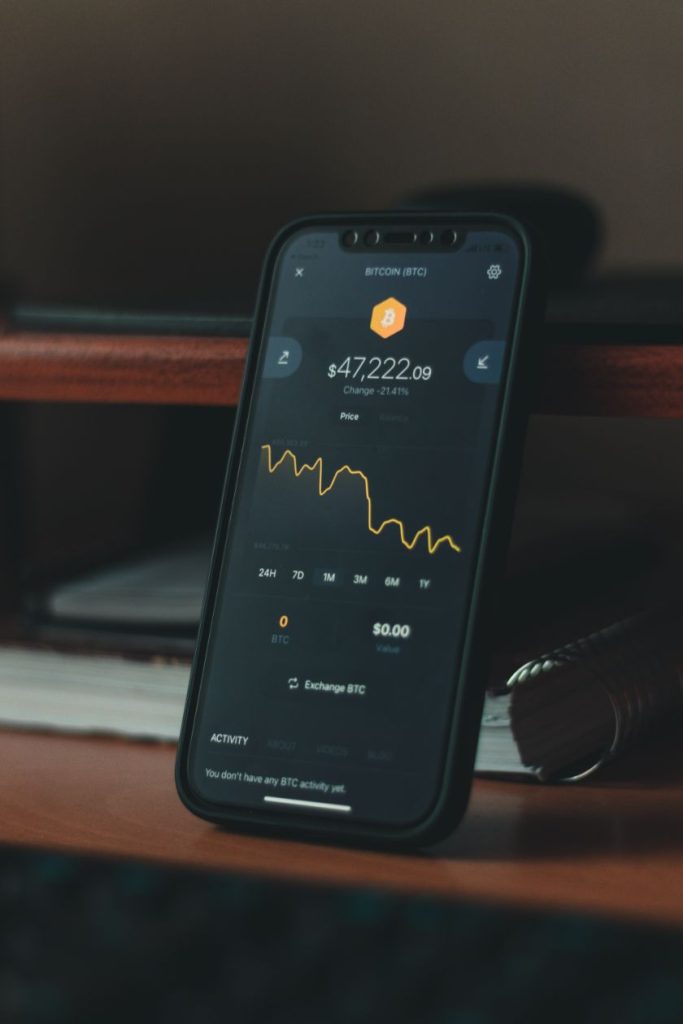
- Hot wallet storage: “hot wallets” refer to crypto storage that uses online software to protect the private keys to your assets. For instance, numerous cryptocurrency exchanges also offer users a wallet feature. The cryptocurrency could be transferred if a hacker managed to gain access to someone’s exchange account. The cryptocurrency may also be stolen if the exchange itself is breached by hackers. A software wallet, which is stored as a program on your computer, is another well-liked variety of hot wallet.
- Cold wallet storage: Cold wallets, also referred to as hardware wallets, use offline electronic devices to securely store your private keys, in contrast to hot wallets. To reduce the impact of a hack, for instance, many cryptocurrency exchanges that store sizable amounts of cryptocurrency frequently keep the majority of their holdings in offline cold wallets. Hardware wallets, which are essentially tiny plastic devices created specifically for protecting someone’s private key, are an example of a cold wallet. A paper wallet is another type of common cold wallet; it is, in fact, your private key printed (or written down) on a piece of paper.
Hot wallets don’t typically impose fees, whereas cold wallets do.
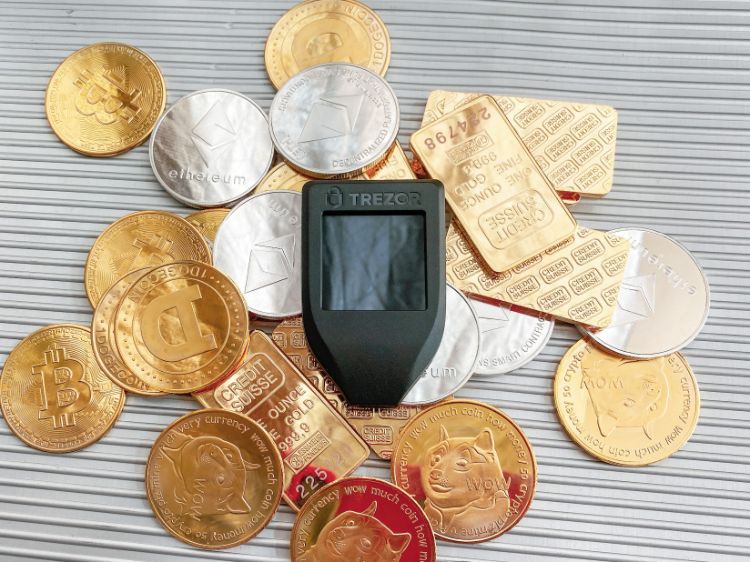
What Can You Purchase Using Cryptocurrencies?
When it first came out, Bitcoin was designed to be a tool for everyday transactions, enabling people to purchase anything from a cup of coffee to a computer or even expensive items like real estate. That hasn’t quite happened, and while more institutions are beginning to accept cryptocurrencies, big transactions using them are still uncommon. Despite this, crypto can be used to purchase a variety of goods from e-commerce websites. Here are some examples:
Technology and e-commerce sites:
A number of tech-related businesses, including newegg.com, AT&T, and Microsoft, accept cryptocurrency on their websites. One of the first websites to accept Bitcoin was the e-commerce platform Overstock. Additionally accepting it are Home Depot, Rakuten, and Shopify.
Luxury goods:
Cryptocurrency is a form of payment that some upscale stores accept. For instance, the online luxury store Bitdials accepts Bitcoin in exchange for luxury watches like Rolex, Patek Philippe, and others.
Cars:
Some auto dealers already accept cryptocurrency as payment, ranging from high-end luxury dealers to mass-market brands.
Insurance:
AXA, a Swiss insurance company, announced in April 2021 that it had started accepting Bitcoin as a form of payment for all of its insurance lines, with the exception of life insurance (due to regulatory concerns). The US-based home and auto insurance broker Premier Shield Insurance also accepts Bitcoin for premium payments.
Use a cryptocurrency debit card, like BitPay in the US, to make purchases at businesses that don’t accept cryptocurrency directly.
Cryptocurrency Fraud & Scams
Sadly, there has been an increase in cryptocurrency crime. Cryptocurrency scams include:
Fake websites: False testimonials and crypto terminology are used on shady websites that promise enormous returns with a high degree of certainty as long as you keep investing.
Recommended: Crypto Websites Reviews
- Toluna Review 2023 – is Toluna Legit Or a Scam?
- Ibotta Reviews 2023 – Pros & Cons You Should Know
- Sweatcoin App Review 2023 – Can You Get Free Paid?
- LifePoints Review 2023 – Is Lifepoints Legit or Scam
- Evidation Review 2023 – Is Evidation Legit
Virtual Ponzi schemes: Cybercriminals advertise fictitious opportunities to invest in digital currencies and give the appearance of huge returns by paying off previous investors with the funds of new investors. Before its perpetrators were charged in December 2019, one con operation, BitClub Network, raised more than $700 million.
“Celebrity” endorsements: Online con artists claiming to be millionaires or well-known figures promise to multiply your investment in virtual currency, but they actually steal what you send. Additionally, they may spread rumors that a well-known investor is supporting a particular cryptocurrency using messaging apps or chat rooms. The scammers sell their stake after inciting investors to purchase and raising the price, which causes the value of the currency to fall.
Romance scams: The FBI warns of a rise in online dating scams in which con artists convince people they meet on dating apps or social media to make investments or transact in virtual currencies. Over 1,800 reports of romance scams with a cryptocurrency focus were received by the FBI’s Internet Crime Complaint Centre in the first seven months of 2021, with losses totaling $133 million.
Otherwise, scammers might set up phony exchanges or assume the identity of legitimate traders of virtual currencies to con people out of their money. Fraudulent pitches for cryptocurrency-based individual retirement accounts constitute a further type of cryptocurrency scam. Then there is straightforward cryptocurrency hacking, in which thieves enter the digital wallets where people store their virtual currency to take it.
Is Cryptocurrency Secure?
Typically, blockchain technology is used to create cryptocurrencies. Blockchain describes the way transactions are recorded into “blocks” and time stamped. Although it is a fairly technical and complex process, the end result is a digital ledger of cryptocurrency transactions that is difficult for hackers to alter.
Transactions also require a two-factor authentication procedure. For instance, to begin a transaction, you might be required to enter a username and password. Following that, you might need to enter an authentication code that was texted to your personal cell phone.
Although there are security measures in place, this does not mean that cryptocurrencies cannot be hacked. Cryptocurrency start-ups have been severely hit by a number of costly hacks. Two of the largest cryptocurrency hacks of 2018 involved Coincheck ($534 million) and BitGrail ($195 million).
The value of virtual currencies is solely determined by supply and demand, unlike money backed by the government. Wild swings can result from this, which could result in large gains or losses for investors. And compared to conventional financial products like stocks, bonds, and mutual funds, investments in cryptocurrencies are subject to much less regulatory protection.
Four Tips To Invest In Cryptocurrency Safely
All investments have risk, according to Consumer Reports, but some experts think that cryptocurrency is one of the riskier investment options available today. These recommendations can assist you in making informed decisions if you intend to invest in cryptocurrencies.
Research exchanges:
Learn about cryptocurrency exchanges before you invest. Over 500 exchanges are available to choose from, according to estimates. Before making a decision, do your homework, read reviews, and consult with more seasoned investors.
Know how to store your digital currency:
If you purchase cryptocurrency, you must store it. You may store it in a digital wallet or on an exchange. There are many different types of wallets, and each has advantages, technical requirements, and security features. You should research your storage options before making an investment, just like with exchanges.
Diversify your investments:
When developing an effective investment plan, diversification is essential, and cryptocurrency investing is no exception. Don’t invest all of your funds in Bitcoin, for instance, just because you are familiar with the name. There are countless possibilities, so it’s best to diversify your investments across different currencies.
Prepare for volatility:
Because of the market’s extreme volatility, be ready for ups and downs. The price will fluctuate wildly. Cryptocurrency might not be the best option for you if your investment portfolio or mental health can’t handle that.
Although cryptocurrency is extremely popular right now, keep in mind that it is still in its relative infancy and is thought to be highly speculative. Be ready for challenges when investing in something new. Do your homework and start investing conservatively if you intend to take part.
Using a comprehensive antivirus is one of the best ways to stay safe while browsing the internet.
How to Sell Cryptocurrency?
It’s possible to sell cryptocurrencies in a number of ways. You can choose to sell them directly via a brokerage, a Bitcoin ATM, an in-person sale, a cryptocurrency exchange, or both. However, cryptocurrency exchanges, also referred to as crypto apps, are the best way to buy and sell cryptocurrencies. The reason is that they provide a good selection of digital currencies in addition to facilitating bitcoin transactions when buying and selling digital assets. Users of cryptocurrency exchanges must create an account with the platform, connect it to a bank account, and then log in to use the service.
You’ll eventually want to sell your cryptocurrencies once you’ve purchased them. Using this method, you can safely sell cryptocurrencies.

1. Get A Cryptocurrency Wallet
You’ll need a place to keep your digital currencies if you want to start trading with them, and that’s where cryptocurrency wallets come in. Simply put, cryptocurrency wallets are essential tools for purchasing, trading, and reselling cryptocurrencies like bitcoin. They not only aid in securely storing cryptocurrencies but also verify transaction data. Crypto wallets can come in either as hardware or software. It’s important to keep in mind that each type of cryptocurrency requires a specific wallet, even though most wallets support holding several different kinds of cryptocurrencies. If you want to profit from cryptocurrency trading, make sure your wallet can hold a variety of currencies.
2. Choose A Bitcoin Blockchain
The Bitcoin blockchain and other cryptocurrency blockchains are powered by blockchain technology, which creates decentralized ledgers that are not under the control of a third party or financial institution. They provide safe and quick transactions that allow users to confirm transactions, control fund transfers, and settle trades. For transferring money and digital goods, different blockchains have varying fees.
3. Choose Your Currency
Since Bitcoin’s launch more than ten years ago, the number of cryptocurrencies that are currently in circulation has dramatically increased. In the cryptocurrency market, there are thousands of different coins, some of which include Dogecoin, Ethereum, Litecoin, and others. Some might not be well-known and might not have a lot of trading volume to show for it. Look for cryptocurrencies that are widely used and can be traded on a variety of cryptocurrency exchanges to maximize your profits from trading cryptocurrencies.
4. Add Your Cryptocurrency To Your Wallet
You must store some cryptocurrency in your newly opened online wallet before you can begin trading. You can begin by purchasing bitcoin, transferring your cryptocurrency to your digital wallet using a hardware wallet or a paper wallet, or all three.
5. Choose How You Want To Sell Bitcoin
Any cryptocurrency, including bitcoin, can be sold in a number of ways. Below are some available options:
Cryptocurrency Exchange
The marketplaces for trading in cryptocurrencies are crypto exchanges and crypto apps. It is simple to buy and sell bitcoin or other cryptocurrencies thanks to the tools they provide, including advanced analytics, strong security, user-friendly features, support, and relatively low fees.
Bitcoin Atms
To sell bitcoin, use a bitcoin ATM or a kiosk. Simply sign into your account, specify how much Bitcoin you want to sell, and choose the crypto wallet address you want to sell from. Once your identity has been confirmed, you will be notified and can withdraw your money.
Peer To Peer Exchanges
Users can privately exchange cryptocurrency with one another on a peer-to-peer (P2P) exchange without the help of a middleman. Users must set up an account, verify their identity, and then proceed to sell bitcoin and other cryptocurrencies on a P2P exchange.
Face-to-face Transactions
Using online marketplaces, you can also choose to sell your cryptocurrency locally. To meet up with a buyer, all you need to do is go to the bitcoin website, register for an account, confirm your identity, and link your bank account. You can send the bitcoin (BTC) you want to sell to a specific Bitcoin address after creating your account. Cash will be deposited into your bank account after the sale is processed. Another option is to quickly scan a QR code.?d? ?n the buyer’s phone ?nd conduct transactions as well.
6. Have A Strategy For Selling Bitcoin
You will need to develop a clear strategy whether your cryptocurrency investment is to sell them off for potential future growth or trade cryptocurrencies frequently to maximize profits and revenues. Your plan should outline what to buy, such as bitcoin, a digital asset, or NFT, when to buy cryptocurrency, how much to buy, and when to sell your cryptocurrency holdings.
7. Complete The Transaction
Your private key can be used to complete cryptocurrency transactions and transfer cryptocurrency to a new owner. After that, the transaction is broadcast to the network so that it can be added to the blockchain. Some cryptocurrency transactions require users to pay network fees, which are due to the members of the blockchain network who are mining your coins or transactions, in order to be completed.
8. Withdraw Cryptocurrency To Your Bank Account
After selling your cryptocurrency, you can either bank transfer the proceeds to your bank or choose to purchase more cryptocurrency. You may choose to transfer money to your bank account if your digital wallet is connected to one. You can choose the currency you want to withdraw in and the amount you want to take out, though in some cases there may be a fee for doing so. Additionally, it is possible to transfer money to a debit card.
10 Ways To Make Money With Cryptocurrency
Additionally, some Bitcoin enthusiasts are currently looking for methods to earn free Bitcoin. In the sections below, we go over how to make money using the aforementioned 10 ways.
1. Passive Cryptocurrency Mining – Overall Best Way To Make Money With Cryptocurrency
Running your own mining rig is one way to earn money with cryptocurrencies. However, purchasing the hardware necessitates a sizable down payment and technical know-how to set it up. As an alternative, you could put money into a cryptocurrency mining protocol that is passive but still generates revenue from mining.
2. Investing In Promising New Coins Early – Best Method For Long-term Returns
Buying the best altcoins as soon as you can is the overall best way to make money with cryptocurrencies. After all, you would have paid a pitiful fraction of a cent if you had purchased Bitcoin at the time of the digital currency’s initial launch in 2009. In a similar vein, when Ethereum launched its token in 2015, it was only trading at $0.75 per token.
The projects mentioned above are both now worth thousands of dollars and have produced impressive returns.
3. Staking And Interest – Earn Passive Income On Idle Cryptocurrency Tokens
The cryptocurrency markets offer two noteworthy ideas that let you profit passively from unused digital tokens you already own. The first is called crypto staking, and it entails locking away your tokens for a predetermined period of time in order to assist in transaction validation on proof-of-stake blockchain networks.
Cardano, Tron, and, very soon, Ethereum are a few examples of popular staking networks. Most importantly, for the duration that your tokens are locked away, you will earn interest. Therefore, you won’t be required to adhere to a minimum lock-up period if you stake on the eToro platform. As an alternative, you can always withdraw your tokens.
When learning how to passively earn money with cryptocurrencies, an interest account is the second idea to keep in mind. Cryptocurrency interest accounts function, in their most basic form, like a conventional bank. This is due to the fact that you will receive an interest payment for depositing your cryptocurrency tokens.
Your crypto tokens won’t be deposited into a smart contract, in contrast to staking. Instead, the service provider of your choice will lend your tokens to people who require loans of money. Because of this, for as long as the tokens are being lent out, the borrower will pay you interest.
4. Day Trading – Make Money By Trading Cryptocurrency Pairs
Actively taking part in day trading is among the most profitable ways to earn money with cryptocurrencies. There is a small catch, though: in order to determine whether the token in question is likely to increase in value or decrease, you will need to at least have a fundamental understanding of how to analyze prices. If you can pull this off, you can make money trading cryptocurrencies all day long.
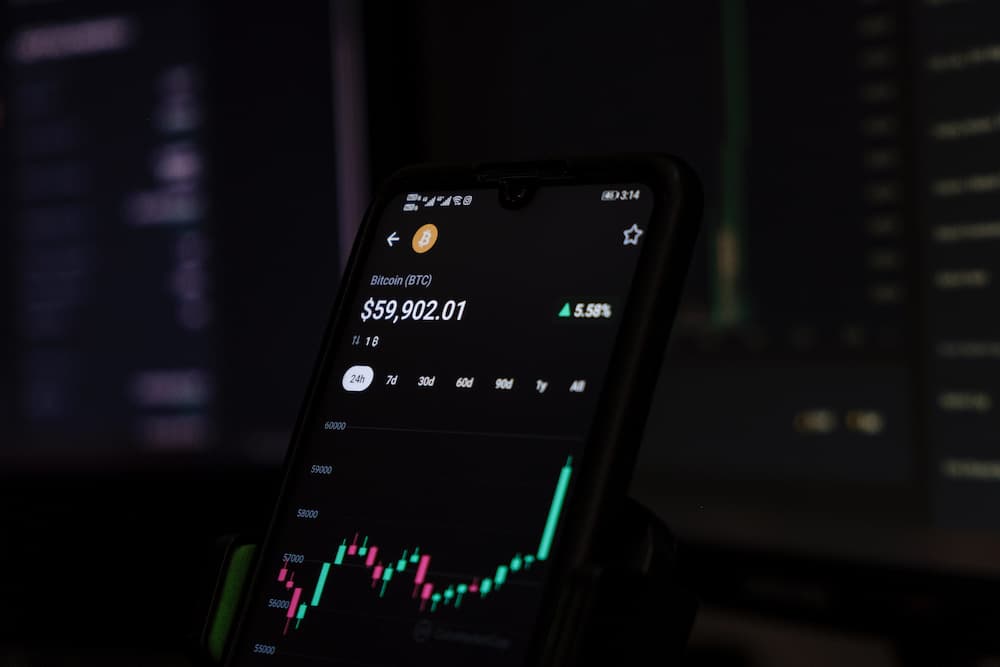
The main idea behind day trading in cryptocurrencies is to look for opportunities to profit from transient volatility. Furthermore, seasoned traders in this market rarely, if ever, hold onto a position for longer than a day. As a result, the goal is to open several positions throughout the day and make smaller but more frequent profits.
Finding a regulated cryptocurrency exchange that satisfies the two essential requirements of low fees and support for a wide range of markets is necessary for day trading digital currencies. With regard to the first, you will find it difficult to make the process worthwhile if you are day trading cryptocurrency on an exchange that levies high fees. After all, commissions will eat up all of your profitable trades.
5. Hodling – Invest In Cryptocurrency And Hodl Long Term
This strategy is arguably the best choice for beginners on our list of ways to earn money with cryptocurrencies. Because HODLing, a play on the word “Hold,” simply refers to the act of purchasing a cryptocurrency and holding onto your tokens over the long term, this is the case. Purchasing stocks and holding them for a number of years is the same thing.
And by doing this, you can avoid worrying about sudden changes in price, especially when investing in reputable and long-standing cryptocurrencies like Bitcoin and Ethereum.
6. Play-to-earn Crypto Games – Earn Rewards For Playing Crypto Games
You might be surprised to learn that playing games is one way to earn cryptocurrency. There is no doubt about it: the market for play-to-earn crypto games is now worth billions of dollars.
7. Crypto Yield Farming And Lending – Generate An Attractive Apy On Your Cryptocurrencies
Currently, yield farming and lending are two additional methods of cryptocurrency income that don’t require any prior experience. Although you can earn interest passively with both of these investment concepts, the methods they refer to are actually a little bit different. Crypto yield farming is primarily the practice of lending your unused tokens to a liquidity pool.
Most of the time, you’ll be giving decentralized exchanges the much-needed liquidity they need. On the Binance and Ethereum blockchain networks, respectively, Pancakeswap and Uniswap are two of the market leaders. Money that is deposited into a liquidity pool is frequently locked away for a predetermined period of time.
Additionally, you will receive interest payments for as long as the tokens are included in the liquidity pool. In many cases, the higher the respective APY offered by the pool, the newer and less liquid the cryptocurrency is. When it comes to cryptocurrency lending, this is the same idea that we previously discussed, in that you will put your digital tokens into a savings account.
And as a result, those who want to borrow money will be able to borrow your tokens. It’s crucial to pick your preferred platform carefully if you want to participate in crypto lending. Due to the constant possibility of defaulting borrowers, this is.
8. Faucets – Earn Free Cryptocurrency By Completing Simple Tasks
By completing tasks on websites that offer cryptocurrency faucets, you can get paid in free virtual currency. The specific tasks that you must complete will vary from one platform to the next in this industry due to the wide variety of platforms. For instance, some platforms for cryptocurrency faucets require you to solve captchas.
Get Started: Now you’re ready to take the next step and earn some cryptocurrency!
Earn free crypto coins with BtcAdv by doing multiple tasks such as filling out Surveys, offerwalls, watching videos, Faucet, shortlink and much more! Additional features like achievements, lottery, and a referral system await!
No prior experience is necessary because anyone can accomplish this. Then there are cryptocurrency faucets that are accessible through a mobile app. In order to earn free cryptocurrency, you are frequently required to play recently released games and reach certain milestones.
The rewards offered at cryptocurrency faucet platforms, it is crucial to remember, are meager. In reality, the majority of the time, you won’t even get much cryptocurrency for each task you complete—maybe a few cents. Crypto faucets, on the other hand, let you earn rewards without taking any financial risks because no money is needed to be deposited.
9. Airdrops – Cryptocurrency Tokens Deposited Into Your Wallet For Free
With airdrops, you can earn free cryptocurrency tokens without making a deposit or spending any money, similar to how you can with faucets. The main idea here is that some recently launched projects will distribute their native tokens directly into people’s wallets as a means of putting the cryptocurrency into circulation.
Instead of a traditional presale and fair launch directly onto a cryptocurrency exchange, this is done. As a result, when they start an airdrop, the project won’t raise any money. This might seem too good to be true, but there are many instances of airdrops that ended up becoming multibillion dollar endeavors.
10. Daos – Buy A Share In A Decentralized Autonomous Organization
Decentralized autonomous organizations (DAOs) are anticipated to have a significant impact on the development of cryptocurrencies and blockchain technology, in addition to the metaverse and NFTs. The term “DAOs” describes endeavors that the community and investors jointly own. Additionally, all you need to do is possess the appropriate token in order to participate in a DAO.
FAQs
Can You Generate Cryptocurrency?
Mining is the process that produces cryptocurrencies. As an illustration, Bitcoin is created using Bitcoin mining. Downloading software that has a complete or partial history of transactions that have taken place in its network is required to complete the process. Cryptocurrency mining is possible for anyone with a computer and an Internet connection, but because it requires a lot of energy and resources, big businesses control the majority of the market.
How Does The Blockchain Operate?
Blockchain technology, a networking protocol that enables computers to cooperate and maintain a shared, impenetrable record of transactions, is the foundation of the majority of cryptocurrencies. Making sure that everyone can agree on the right copy of the historical ledger is the challenge in a blockchain network. It would be challenging for people to have confidence in the security of their holdings in the absence of a recognized method to validate transactions. There are several ways of reaching “consensus” on a blockchain network, but the two that are most widely used are known as “proof of work” and “proof of stake.”
Which Cryptocurrencies Are Most Popular?
Cryptocurrencies like Ethereum, Binance Coin, Solana, and Cardano are also very popular, but Bitcoin is by far the most widely used.
Are NFTs Cryptocurrencies?
NFTs, or non-fungible tokens, are digital assets that grant ownership over what might be regarded as an original copy of a digital file. They can be bought and sold on many of the same marketplaces as cryptocurrencies, and they have many other similarities.
NFTs, however, are distinct from cryptocurrencies because of the awkward word non-fungible in their name.
Since all units of a given cryptocurrency are fungible, they are essentially equivalent to one another. The value of your one Bitcoin and mine is the same.
How Do You Mine Cryptocurrencies?
A proof-of-stake cryptocurrency like Bitcoin is typically the only one where mining is feasible. Before you go any further, it is important to keep in mind that without a significant investment, entry barriers may be high and success rates may be low.
The process of mining Bitcoin has become more challenging as the network has expanded, even though early users could do it using standard computers. Nowadays, the majority of miners employ specialized computers, the sole purpose of which is to perform the intricate calculations necessary for mining throughout the day, every day. You won’t be successful with even one of these computers, though. In their pursuit of rewards, many miners utilize entire warehouses’ worth of mining machinery.
Joining a mining pool, where users split rewards, is an option if you lack the resources to compete with the powerhouses. This decreases the size of the reward you would receive for a successful block but increases the likelihood that you might at least see some return on your investment.
How Is Cryptocurrency Value Increased?
Let’s look at Bitcoin, the most important cryptocurrency, to show how some cryptocurrencies can increase in value.
By the end of 2020, Bitcoin had nearly quadrupled in value, topping $28,900. By April 2021, the price of BTC had increased by more than twice from the beginning of the year, but by July, all of those gains had been erased. Then, on November 10, 2021, BTC more than doubled once more, reaching an intraday high above $68,990, before falling to roughly $46,000 at the end of that year. Bitcoin is currently worth slightly more than $31,000 as of early June 2022.
Over the past five years, Bitcoin has increased by more than 1,000%, while the original cryptocurrency is down 35% year to date.
How Much Money Does The Cryptocurrency Market Capitalize?
The term “market cap” or “capitalization” refers to the total monetary value of all the coins that have ever been mined. The market capitalization of a cryptocurrency is calculated by dividing the cost of each token by the total number of coins in circulation. Large-cap cryptocurrencies with higher liquidity and a market cap of over $10 billion include Bitcoin and Ethereum. Coins with a market cap between $1 billion and $10 billion are referred to as mid-cap, while those with a market cap under $1 billion are referred to as small-cap.
Market capitalization aids investors in assessing the value of multiple cryptocurrencies and provides a more comprehensive picture than price alone, which is only one metric used to measure a cryptocurrency’s worth. Its significance can demonstrate whether a cryptocurrency is safe to purchase in comparison to others and its potential for growth.
How Will Cryptocurrencies Develop In The Future?
Over the past ten years, cryptocurrency has advanced at a lightspeed rate and come a long way. While DeFi has paved the way for fresh avenues for borrowing and lending, value can be stored, transferred, and spent in a variety of ways through various assets and solutions.
Additionally, some well-known businesses are interested in blockchain technology and are exploring its potential applications, including supply chains. According to the growth and adoption that have been observed since Nakamoto published the framework for a tiny asset called Bitcoin in 2008, the future of cryptocurrencies and the technology that supports them looks promising.
Cryptocurrency News & Price Prediction
Cryptocurrency News
- Are There Ethereum (ETH) and Solana (SOL) Alternatives – 2023 Guide
- Will RenQ Finance (RENQ) Leave Solana (SOL) Miles Behind in Terms of Market Cap?
- Crypto Price Predictions: Solana, Theta Network, HOOK
- Ethereum Classic’s Hashrate and Price Trend Lower After Ethereum PoW to PoS Transition
- Why Do Solana DeFi Protocols Keep Getting Exploited?
Cryptocurrency Price Prediction
The Bottom Line
Cryptography is used to secure digital assets like cryptocurrencies. They are highly speculative because they are a relatively new technology, so before investing, you should be aware of the risks.
Find it useful? Bookmark it or Share it with your friends!
References:


























